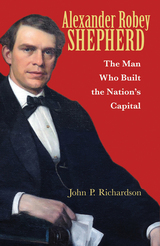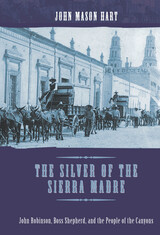
With Alexander Robey Shepherd, John P. Richardson gives us the first full-length biography of his subject, who as Washington, D.C.’s, public works czar (1871–74) built the infrastructure of the nation’s capital in a few frenetic years after the Civil War. The story of Shepherd is also the story of his hometown after that cataclysm, which left the city with churned-up streets, stripped of its trees, and exhausted.
An intrepid businessman, Shepherd became president of Washington’s lower house of delegates at twenty-seven. Garrulous and politically astute, he used every lever to persuade Congress to realize Peter L’Enfant’s vision for the capital. His tenure produced paved and graded streets, sewer systems, trees, and gaslights, and transformed the fetid Washington Canal into one of the city’s most stately avenues. After bankrupting the city, a chastened Shepherd left in 1880 to develop silver mines in western Mexico, where he lived out his remaining twenty-two years.
In Washington, Shepherd worked at the confluence of race, party, region, and urban development, in a microcosm of the United States. Determined to succeed at all costs, he helped force Congress to accept its responsibility for maintenance of its stepchild, the nation’s capital city.


This deeply felt memoir is a love letter to Washington, DC. Carol Lancaster, a third-generation Washingtonian who knew the city like few others, takes readers on a tour of the nation’s capital from its swamp-infested beginnings to the present day, with an insider’s view of the gritty politics, environment, society, culture, and larger-than-life heroes that characterize her beloved hometown. The former dean of Georgetown University’s School of Foreign Service, a friend of presidents and dignitaries all over the globe, Lancaster colorfully describes the city’s three near-death experiences and the many triumphs and tribulations that emerged as the city took shape. Along the way she provides brief biographies of three of the most influential figures in the city’s history: urban designer Pierre Charles L’Enfant, whose vision for the city was realized only after his death; civic leader “Boss” Shepherd, whose strong-arm tactics cleaned up the downtown area and helped create the walking mall we know today; and controversial mayor Marion Barry, whose rise and fall and resurrection underscored the contemporary challenges of home rule.
Teeming with informative anecdotes and two dozen illustrations of landmarks and key characters, Lancaster’s memoir is a personal and passionate paean to the most powerful city in the world—from one of its most illustrious native daughters.
READERS
Browse our collection.
PUBLISHERS
See BiblioVault's publisher services.
STUDENT SERVICES
Files for college accessibility offices.
UChicago Accessibility Resources
home | accessibility | search | about | contact us
BiblioVault ® 2001 - 2025
The University of Chicago Press









